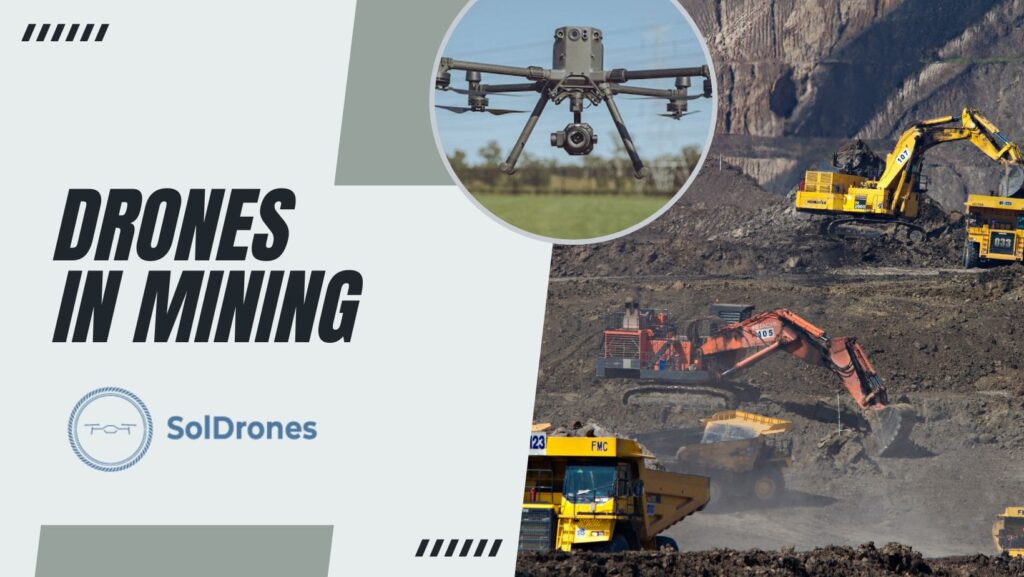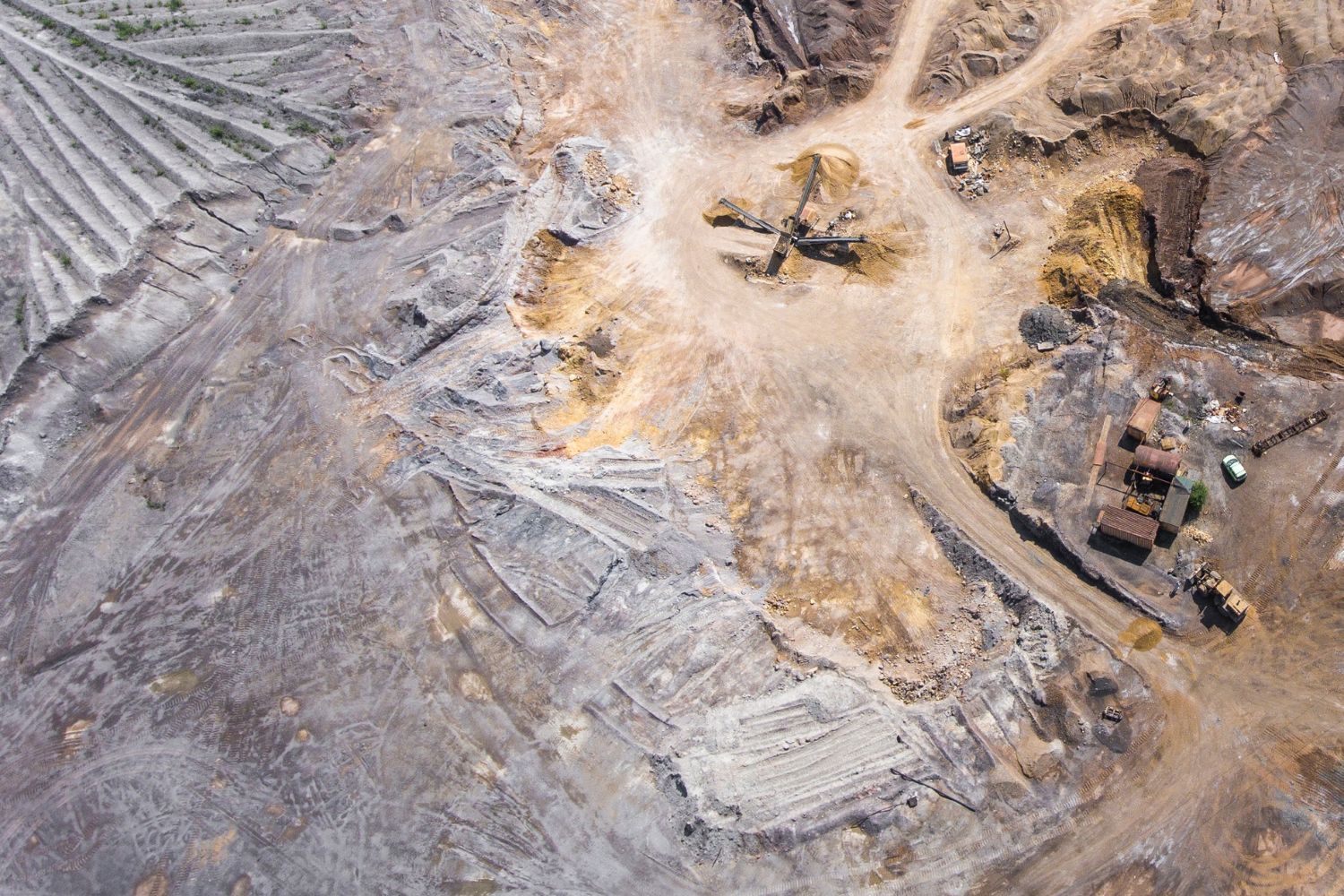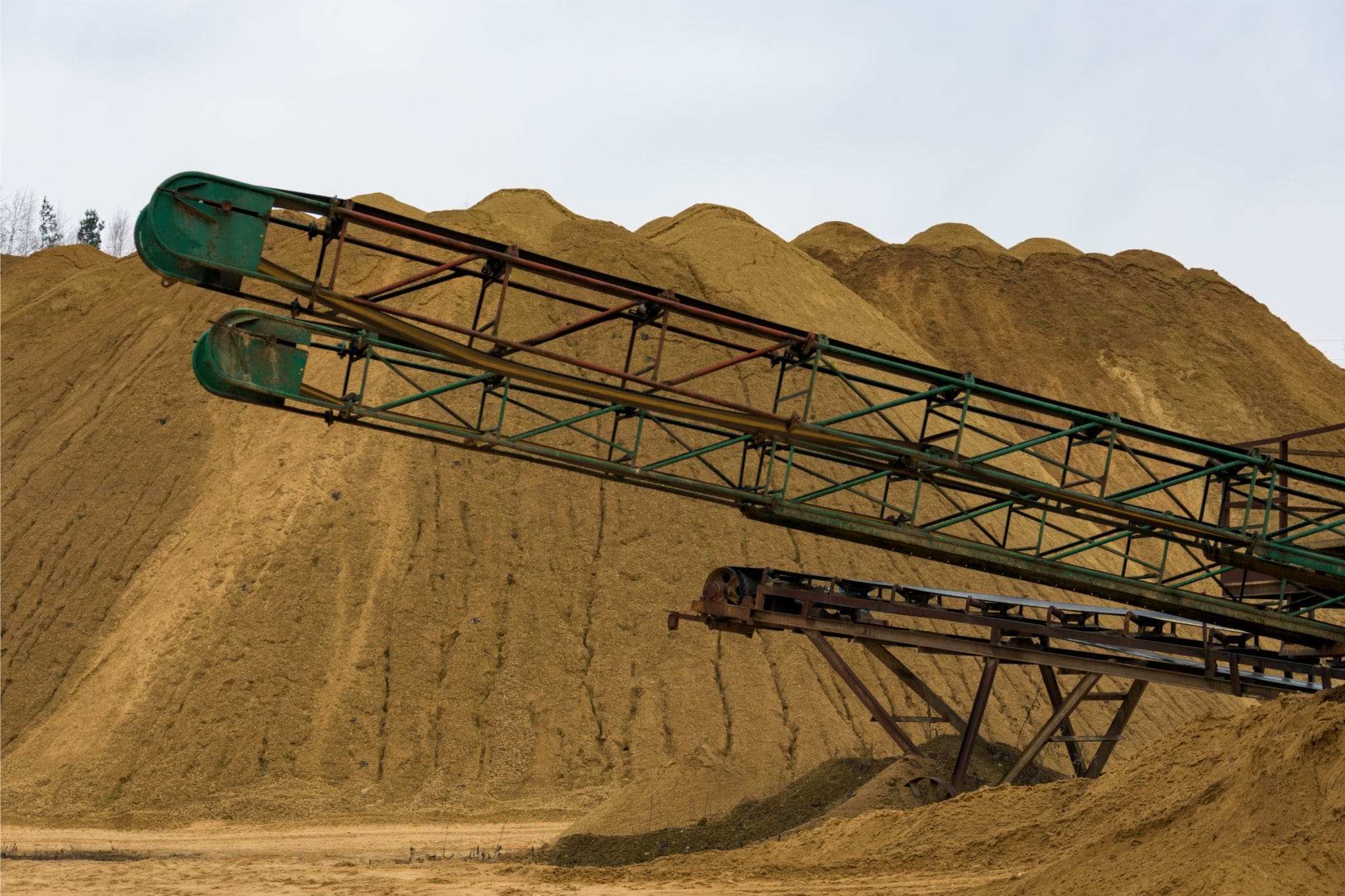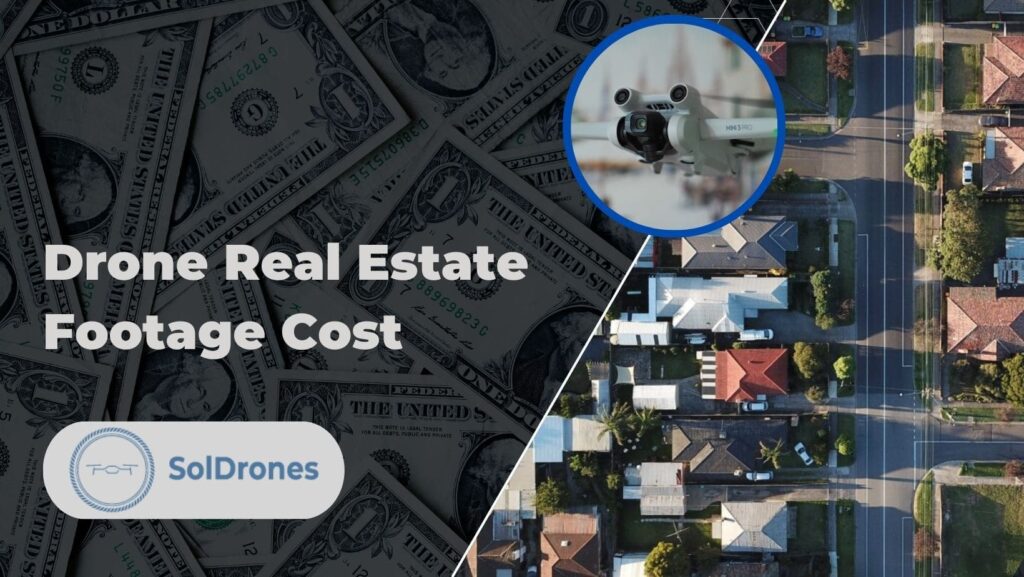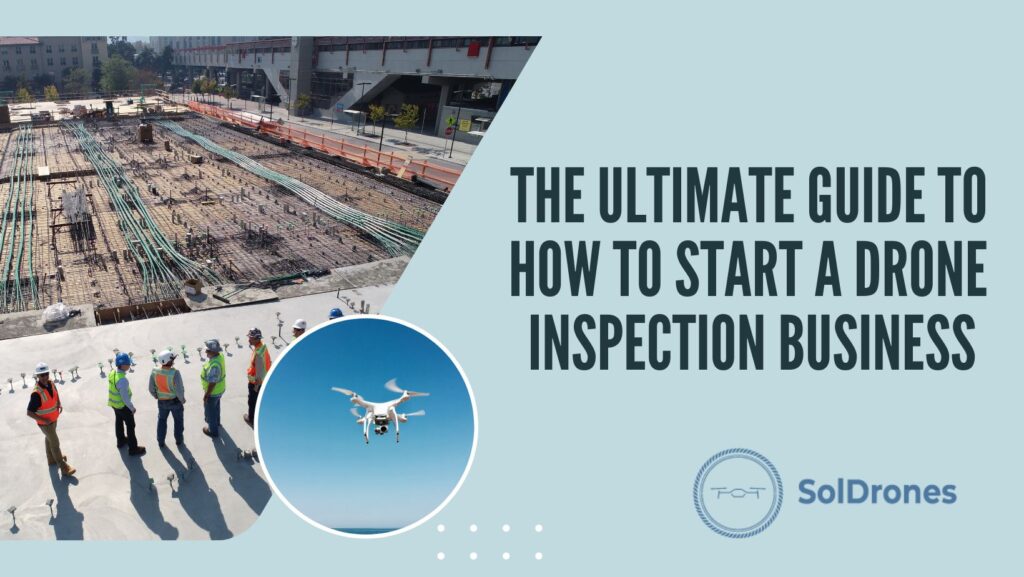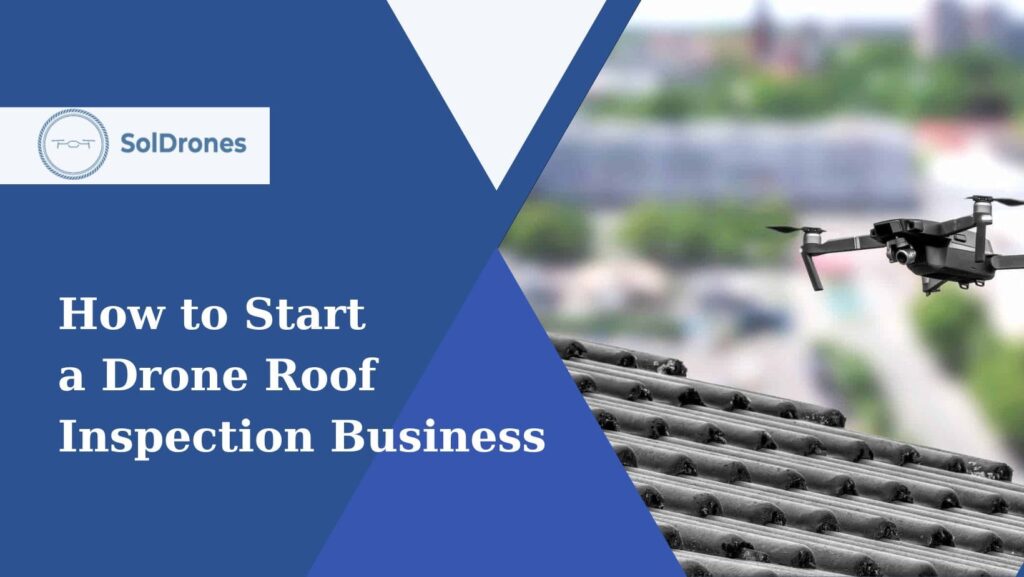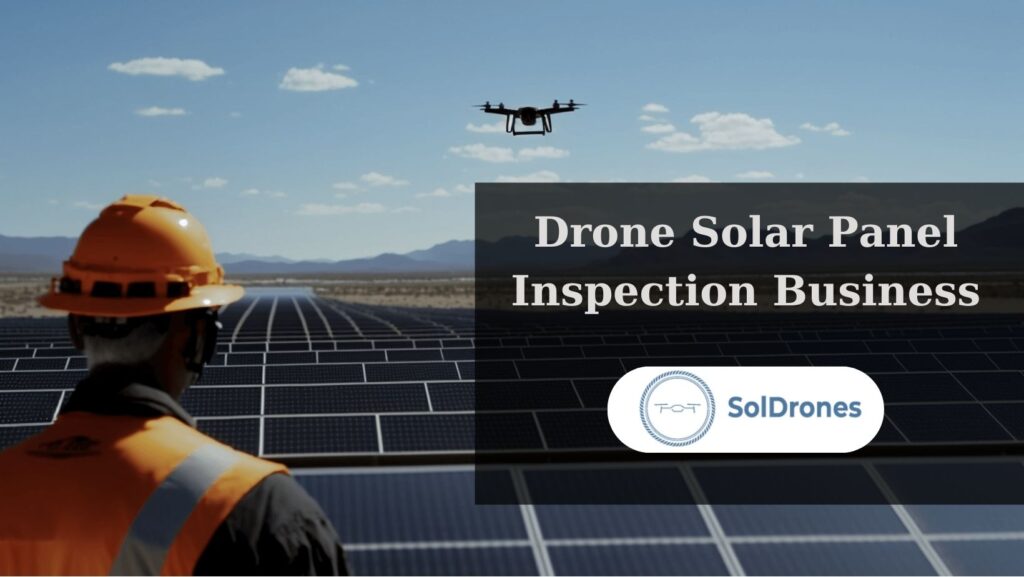The buzz of drone propellers isn’t just for weekend hobbyists or filmmakers anymore.
In mining, drones – or, unmanned aerial vehicles (UAVs), are becoming indispensable for tasks ranging from geological surveying to equipment monitoring. And it’s not just about flashy technology; drones are helping mining companies achieve unprecedented efficiencies and are redefining safety protocols.
So why should you care?
Drones are breaking barriers in the mining industry, offering pathways to lower costs, safer work environments, and more accurate data collection.
Our team at SolDrones has spent a significant amount of time researching how drones are positively changing the world around us and in this article, we uncover everything you need to know about drones in the mining industry and the future outlook.
Whether you’re a drone pilot or mine operator, you’ll appreciate the insights we’ve pulled together to help you become an expert.
Article Highlights
- Drone not only help with data collection in mining operations, but also with resource optimization and the enforcement of safety measures
- Mining maps aided by drones include 2-D photogrammetry to advanced 3-D LiDAR-based models
- The share of mining operations using drones continues to increase around the globe
Historical Context
For centuries, surveying in mining was a labor-intensive affair. From the elaborate aqueducts of Roman engineers to the pickaxe-wielding miners of the 19th century, the methods were grueling. Accuracy was a game of best guesses and hopeful calculations.
Fast forward to the 21st century, where satellite imagery and GPS coordinates had already started easing some burdens. Yet, even these advancements had limitations. Aerial shots lacked granularity, and on-the-ground surveys were still required for a comprehensive understanding.
Enter drones, equipped with the latest cameras and sensors. Suddenly, areas that were too dangerous or costly to survey became accessible.
Advanced 3D mapping technology merged with agile maneuverability, making drones an invaluable asset to modern mining. These airborne agents of change have not only revolutionized data collection but also made it significantly safer and more efficient.
How are Drones Revolutionizing the Mining Industry?
Drones aren’t just an accessory in the mining industry; they are becoming a cornerstone. Here’s how these aerial marvels are rewriting the rulebook for mining operations:
- Data Collection: Drones capture high-resolution images and generate real-time 3D maps. This has been a game-changer for data-driven decision-making.
- Safety Measures: With drones in the picture, the necessity for humans to enter dangerous zones for surveying is significantly reduced, enhancing operational safety.
- Resource Optimization: Equipped with sensors, drones can analyze mineral compositions and even predict the lifespan of a mining site, allowing for optimal resource allocation.
- Cost-Effectiveness: Manual surveying comes with its fair share of costs. Drones not only reduce this financial burden but also perform the task faster, saving both time and money.
- Environmental Impact: Drones are invaluable for environmental assessments. Their aerial views provide comprehensive analysis, which helps in minimizing the ecological footprint of mining activities.
Statistics reveal the adoption rate of drones in mining is soaring. According to GlobalData as cited by Mining Technology, “the share of mines that have invested to some extent in drones has increased from 44% in 2018 to 65% in 2022, with 32% in the 2022 survey”.
Mining2Me created this short video describing how drones are disrupting the mining industry:
Video Credit: Mining2Me
Drones are not just a technological whim; they are shaping the future of mining. Their escalating presence, backed by compelling statistics, shows that drones have transitioned from being an experimental tool to an industry staple.
Benefits of Drones in Mining
When it comes to mining, drones are more than just flying cameras; they’re versatile, cost-effective solutions to a host of complex challenges.
Survey and Mapping
Drones offer cost-effective and precise geospatial data collection. Types of mapping range from 2-D photogrammetry to advanced 3-D LiDAR-based models.
Monitoring and Inspection
Tailing dams and underground mines are notorious for their hazardous conditions. Drones like the Elios 3 by Flyability offer risk mitigation by taking humans out of harm’s way.
Safety Measures
Drones are at the frontline of search and rescue, providing quick and effective surveillance in emergency scenarios. They also identify and eliminate hazards, thereby safeguarding everyday operations.
Route Logistics and Planning
Drone-mounted magnetometers are essential tools for road optimization and site exploration. They help in mapping out the most efficient routes for both equipment and personnel.
Stockpile Management
Drone technology enables precise volume estimation of stockpiles, helping to manage resources more efficiently. Frequent monitoring reduces wastage and ensures the consistent quality of materials.
The many benefits of drones—ranging from cost savings and safety enhancements to data collection and operational efficiencies—are making them indispensable in the contemporary mining landscape.
Drones in Metals and Mining
When it comes to metal mining, drones have distinct roles and considerations. Metal deposits often occur in complex geological settings, requiring specialized sensors and mapping techniques.
Different mining operations, such as coal and metal mining, have varying needs and challenges. For instance, coal mines generally require methane detection, while metal mines may need hyperspectral sensors to identify mineral compositions.
Overall, drones’ versatility allows them to be customized for specific tasks in metal mining. They not only streamline operations but also tackle unique challenges, thereby proving their adaptability and utility in various mining contexts.
Regulatory Framework
Navigating the regulatory landscape is crucial for drone operations in mining. The Federal Aviation Administration (FAA) sets the rules, including altitude limits and no-fly zones.
Beyond FAA regulations, ethical considerations also come into play. For instance, drones must comply with environmental standards to minimize habitat disruption.
Data security is another ethical concern. With drones collecting vast amounts of sensitive data, ensuring its secure storage and ethical use is imperative. Overall, staying compliant and ethical not only protects a drone program but also fortifies its public trust.
Future of Drones in Mining
As technology advances, drones are set to become even more indispensable in the mining industry. Enhanced AI capabilities are making drones smarter, capable of autonomous operation and real-time decision-making.
Advancements in drone battery technology are also noteworthy. Longer flight times mean that drones can cover more ground, improving both efficiency and cost-effectiveness. These strides could revolutionize how mining companies approach resource exploration and hazard assessment.
Simultaneously, the scope of drone applications is widening. Expect drones to play roles in newer areas like automated drilling and even remote detonation of explosives. These are not just incremental improvements; they mark a transformative phase in the integration of drones in mining.
With evolving technology and a broadening array of applications, drones are poised to redefine the future landscape of the mining industry.
Final Thoughts
In a nutshell, drones are fundamentally altering the face of the mining industry, shifting paradigms from antiquated methods to cutting-edge technology. Their ability to enhance safety measures, streamline data gathering, and bolster logistical planning has made them an invaluable tool. Statistical evidence confirms that drone adoption in the sector is not a mere fad but a calculated, strategic decision that is paying dividends.
From surveying and mapping to monitoring and inspection, drones offer a comprehensive set of solutions that outperform traditional methods in both efficacy and cost. Special considerations for metals and mining emphasize the tailored nature of drone applications, further cementing their role in the sector.
However, as we embrace this airborne revolution, it’s critical to navigate the regulatory frameworks and ethical considerations that accompany it. The FAA has laid down specific regulations that demand adherence, and concerns around environmental impact and data security cannot be overlooked.
The future is rife with opportunities for technological advancements that will only expand the roles drones play in mining. From AI and machine learning to more efficient batteries, drones are on the cusp of becoming even more versatile. It’s not just about the gadgets in the sky; it’s about a more efficient, safer, and environmentally responsible future in mining.
FAQs
What are the main benefits of using drones in mining?
Drones offer a multitude of advantages in the mining industry. They enhance safety by minimizing human exposure to hazardous conditions, allow for quick data gathering and real-time analytics, and can significantly reduce operational costs when compared to traditional methods like manned aircraft.
How are drones revolutionizing the mining industry?
Drones are becoming indispensable in the mining sector for a variety of functions. From detailed mapping and surveying to monitoring and inspection, drones provide accurate, timely, and cost-effective solutions. Their rapid adoption is supported by statistical evidence, showing they are a strategic tool for modern mining operations.
What are the different ways drones are used in metals and mining?
In metals and mining, drones are adapted to meet specific needs. Unlike coal mining, metal mining often requires specialized sensors and data analysis tools. Drones in metal mining may be equipped with advanced magnetometers for exploration and specific types of cameras for monitoring ore quality.
What regulations apply to the use of drones in mining?
The Federal Aviation Administration (FAA) has outlined regulations governing the commercial use of drones, which include height restrictions, no-fly zones, and operator certifications. Additionally, ethical considerations such as environmental impact and data security also have to be taken into account.
What is the future of drones in the mining industry?
The future looks promising with several technological advancements on the horizon. Expect innovations in drone AI, machine learning for data analysis, and longer-lasting battery life to further expand the capabilities and applications of drones in mining.

